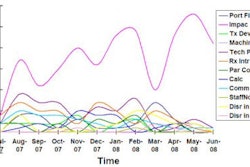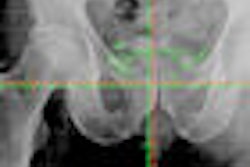Quality control is a vital issue in radiation therapy. A slight error in calculations or treatment planning can mean radiation dose delivered to healthy tissue -- or worse. The introduction of increasingly complex new technologies has only made life more complicated for medical physics professionals.
A panel of experts discussed different approaches for implementing quality improvement in radiation therapy at the recent American Association of Physicists in Medicine (AAPM) meeting in Houston. The quality control tools discussed ranged from peer reviews and data sharing to regulatory approaches and standards.
"Quality improvement in established treatment strategies should acknowledge the evidence base that has been built up. However, to move forward with new technologies and strategies, there is no evidence base, so informed judgment has to be relied upon," said session moderator Peter Dunscombe, Ph.D., director of medical physics with the Tom Baker Cancer Centre of Calgary, Alberta.
Peer review quality audits
One method of ensuring quality is peer reviews of clinical radiotherapy physics staff, an approach described in detail by Per Halvorsen of the department of radiation oncology at Middlesex Hospital in Middletown, CT.
Most peer reviews typically include an onsite visit, as well as independent verifications of accelerator outputs, audits of randomly selected patient charts with an emphasis on dosimetry calculations, physicist checks and approvals, treatment history records, and therapy plan documentation. Staffing levels are assessed to ensure they are in line with procedure volume.
Written results of the review are presented to the physicist with recommendations for improvement. Reviews should be annual when new staff, equipment, or services are added, otherwise they should occur every three years, Halvorsen said.
The AAPM has developed QA review tools, and reviews are also arranged through accrediting organizations (the American College of Radiology and American College of Radiation Oncology) and radiation protection committee audits.
The ROSIS project
Another recent initiative aims to use information technology to improve quality and reduce incidents. The Radiation Oncology Safety Information System (ROSIS) is a network started by members of the European Society for Therapeutic Radiology and Oncology (ESTRO) to create a Web-based international radiotherapy incident reporting system.
Today ROSIS has participation from 66 radiation oncology departments, including 16 in Europe, 11 in North America (eight in the U.S. and three in Canada), eight in Asia, three in South America, and one in Australia. ROSIS users register to obtain an ID number, then submit reports online that are automatically distributed to the ROSIS review group. Transfers to the database and online database updating are done manually to protect confidentiality.
Tom Knöös, a ROSIS representative and member of the radiation physics department at Lund University Hospital in Sweden, said the ROSIS information-sharing system has the potential to reduce radiation oncology incidents worldwide by enabling departments to share and view incident reports, as well as collect and analyze information on the occurrence, detection, severity, and correction of incidents.
"Awareness is a learning tool" that can alert users to potential hazards that emerge from user reports and analysis, Knöös said.
ROSIS is co-developing a similar system for interventional radiology with the International Atomic Energy Agency (IAEA).
A regulatory agency's model
Yet another approach to quality improvement in the use of medical radiation safety can be found at the U.S. Nuclear Regulatory Commission (NRC), which emphasizes training and experience, written directives, and technical requirements. It further requires licensed medical staff to self-report "medical events" in which potential procedural problems exist.
The NRC also requires equipment manufacturers and users licensed by the agency to report defects or other noncompliant equipment that may be safety hazards, and carries out inspections of licensees for compliance. It alerts its licensees to potential problems through informational notices. The NRC also provides guidance to licensees on the methods needed to maintain user, public, and patient radiation safety and regulatory compliance, according to Ronald Zelac, Ph.D., of the NRC's Medical Safety and Event Assessment Branch.
Evidence-based quality assurance
In summarizing the essentials of a quality radiation therapy program, Dunscombe said a successful effort should embody staff who are educated, trained, and certified medical physicists (or physicists with relevant experience); adequate staffing levels to meet clinical demands, particularly during the safe introduction of new technologies; and an awareness of what can go wrong, obtained either retrospectively from a database such as ROSIS or prospectively from a "failure modes and effects" analysis.
By Kathlyn Stone
AuntMinnie.com contributing writer
August 19, 2008
Related Reading
QA tool cuts errors in radiation oncology department, August 6, 2008
AHRQ sets 2008 target for error reporting system, August 24, 2007
Copyright © 2008 AuntMinnie.com


















